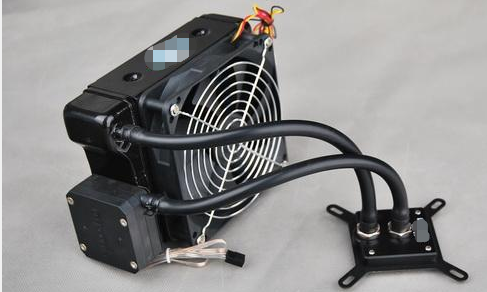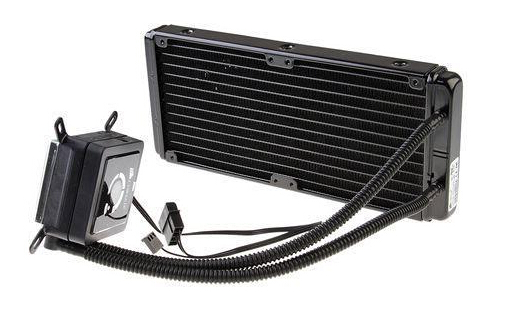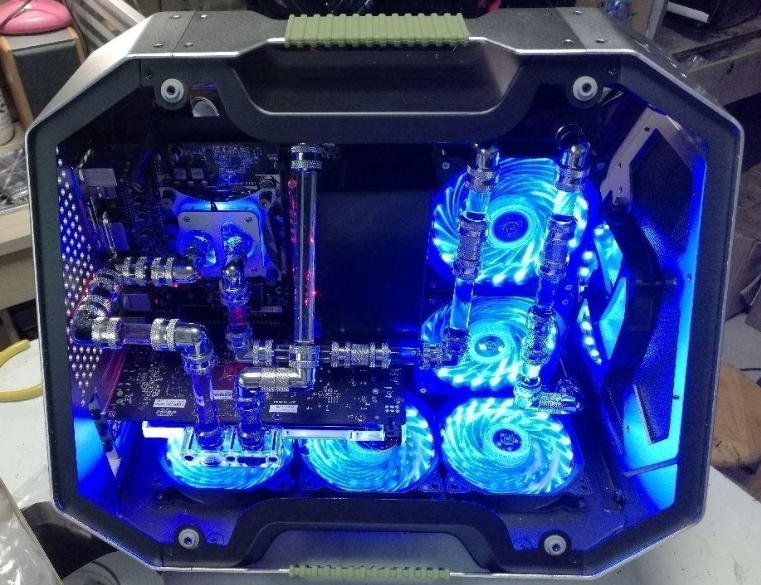

The CPU water-cooled radiator refers to the use of liquid to forcibly circulate and take away the heat of the radiator driven by a pump. Compared with air cooling, it has the advantages of quiet, stable cooling and less dependence on the environment. The heat dissipation performance of water-cooled radiator is directly proportional to the flow rate of cooling liquid (water or other liquid), and the flow rate of cooling liquid is related to the power of water pump in refrigeration system. Moreover, the heat capacity of water is large, which makes the water-cooled refrigeration system have good heat load capacity. Equivalent to 5 times of the air-cooled system, resulting in a direct benefit that the CPU operating temperature curve is very flat. For example, when running programs with heavy CPU load, the system using air-cooled radiator will have a temperature thermal peak in a short time, or may exceed the warning temperature of CPU, while the water-cooled cooling system has a relatively small thermal fluctuation due to its large heat capacity.

According to the principle of water cooling, it can be divided into active water cooling and passive water cooling. Active water cooling not only has all accessories of water cooling radiator, but also needs to install cooling fans to assist in cooling, which can greatly improve the cooling effect. This water cooling method is suitable for DIY overclocking players with high frequency.
Passive water cooling does not install any cooling fan, but only relies on the water cooling radiator itself to dissipate heat, and at most, some cooling fins are added to help dissipate heat. This water cooling method is worse than active water cooling, but it can achieve complete mute effect, which is suitable for mainstream DIY overclocking users. The real advantage of integrated water cooling is that it can handle CPU wattage much higher than any air-cooled radiator, and it is not affected by the high temperature in the chassis. If used in low-power CPU, water-cooled radiator is not much better than excellent air-cooled radiator in CPU cooling. But when you use a high-end or extremely overclocked CPU that generates a lot of heat, even a small DIY water cooling system will keep the CPU temperature at a fairly low level. Classification Integrated: Body water cooling is an integrated system, which, like split water cooling, also includes water cooling head, cold drain, water pipe, water pump and water tank, except that integrated water cooling only integrates these accessories and is convenient for users to install. Split type: it is fixed on the CPU as a heat conductor, and is connected with the water pump and the cold exhaust through a water pipe to form a heat dissipation system.

From the installation mode of water cooling, it can be divided into internal water cooling and external water cooling. For the built-in water cooling, it is mainly composed of radiator, water pipe, water pump and enough water source, which means that most of the water cooling and cooling systems are large in volume, and the internal space of the chassis is required to be wide enough. As for the external water-cooled radiator, its cooling water tank, water pump and other working components are all arranged outside the chassis, which not only reduces the occupation of space in the chassis, but also can obtain better cooling effect.
As we all know, high temperature is the enemy of integrated circuits. High temperature will not only lead to unstable operation of the system, shorten its service life, and even burn some components. The heat that causes high temperature does not come from outside the computer, but from inside the computer. The function of radiator is to absorb the heat and ensure the normal temperature of computer components. There are many kinds of radiators, which are needed by CPU, graphics card, motherboard chipset, hard disk, chassis, power supply and even CD-ROM and memory. These different radiators cannot be mixed, and the radiator of CPU is the most frequently contacted one. Subdivided heat dissipation methods can be divided into air cooling, heat pipe, water cooling, semiconductor refrigeration, compressor refrigeration and so on.
